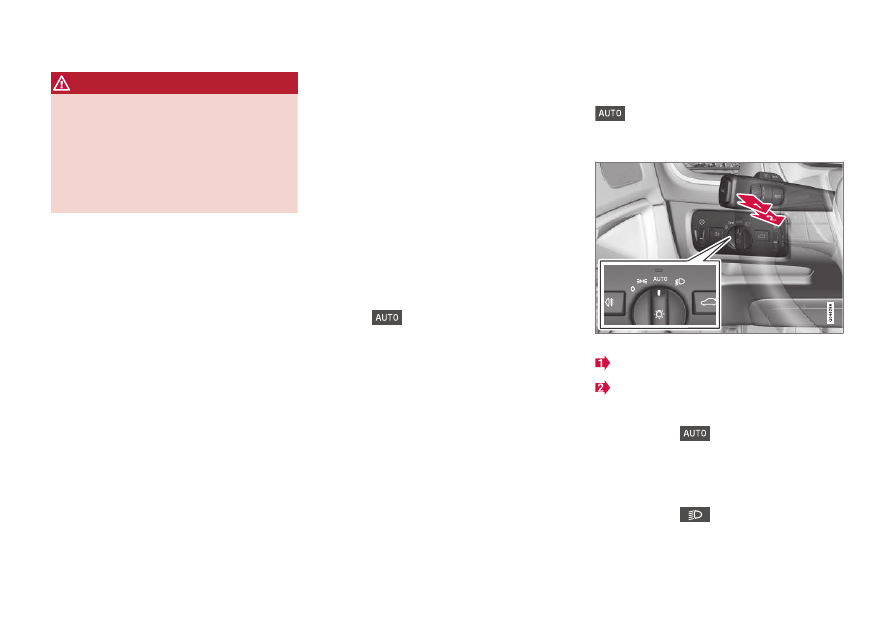Volvo V40 (2018 year). Manual - part 5

INSTRUMENTS AND CONTROLS
}}
* Option/accessory.
91
WARNING
This system help to save energy - it cannot
determine in all situations when daylight is too
weak or sufficiently strong, e.g. in mist and
rain.
The driver is always responsible for ensuring
that the car is driven with the correct beam
pattern for the traffic situation and in accord-
ance with applicable traffic regulations.
Related information
•
•
Tunnel detection*
Tunnel detection changes the lighting from day-
time running lights to dipped beam when the car
is driven into a tunnel.
The tunnel detection function is available in cars
with rain sensor
*. The sensor detects the
entrance to a tunnel and resets the lighting from
daytime running lights to dipped beam. Approx.
20 seconds after the car has left the tunnel, the
lighting returns to daytime running lights. If the
car is driven into another tunnel within this time
period then dipped beam is kept switched on.
This prevents frequent changes to the car's beam
pattern.
Note that the headlamp control's knob must
remain in
position for tunnel detection to
work.
Related information
•
•
Main/dipped beam
With the knob for headlamp control in position
and the car's electrical system in key posi-
tion
II or the engine running, the dipped beam is
activated automatically in poor light conditions.
Stalk switch and knob for headlamp control.
Position for main beam flash
Position for main beam
Dipped beam
With the knob in
position, dipped beam is
activated automatically at dusk or when daylight
becomes too weak. Dipped beam is also acti-
vated automatically if the rear fog lamp is acti-
vated.
With the knob in
position, dipped beam is
always switched on when the engine is running
or when key position II is active.